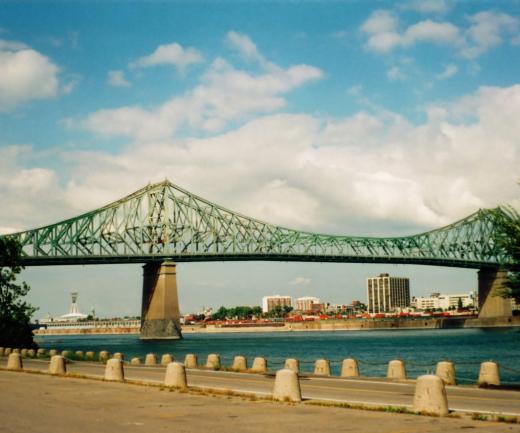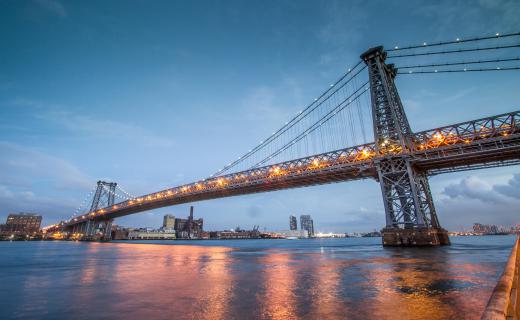What Is a through Bridge?
A through bridge is designed so that the road bed is suspended below the trusses or arches that make up the load bearing structure of the bridge. The roadway then passes through the trusses or arches, instead of over them. Many different types of bridge designs qualify as through bridges, including some truss bridges, arch bridges, and others.
Bridge designs vary widely, and many types are still in use today. Truss bridges, suspension bridges, and arch bridges are some of the most common. While bridges can be classified in a number of ways, when categorized according to the placement of the deck, or roadway, a bridge is either a through bridge or a deck bridge. A deck bridge is a type of bridge in which the roadway rests atop the trusses and any supports. A through bridge has a roadway that runs between or through the trusses, arches, or other suspension towers and cables.

When describing a bridge design, the terms are combined to further distinguish it from other types of bridges. For example, a through truss bridge is different from a through arch bridge. Bridges that have trusses or arches that extend both above and below the deck are called half-through bridges. The trusses for a through bridge are often connected at the top, passing over the roadway, creating a tunnel-like effect. Historic wooden covered bridges are examples of through bridges in which the tunnel effect has been taken to its maximum by completely enclosing the roadway. When the trusses are not connected, the bridge is called a pony truss bridge.

On an arch bridge that is designed as a through or half-through bridge, the roadway is usually suspended from the arches, often by cables. This may be thought of as a type of suspension bridge, although the term is more often, and more correctly, applied to bridges with large cables that run from anchor tower to anchor tower, with smaller cables extending down to the roadway for support. While through bridges are generally regarded as necessarily relying on a truss or arch design, suspension bridges are technically through bridges as well, as the roadway is supported by its lower horizontal members even though these are supported by suspension cables.
AS FEATURED ON:
AS FEATURED ON:












Discuss this Article
Post your comments